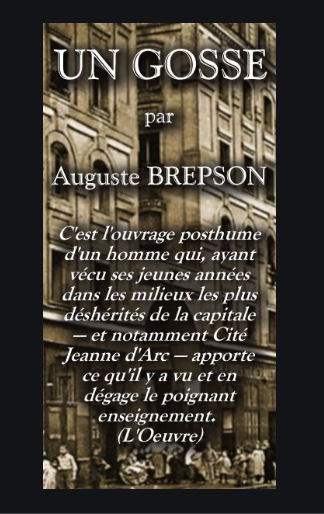THE SHAME OF PARIS, CITÉ JEANNE D'ARC
(BUILT IN 1884)
"The modern Court of Miracles... those who live there have fallen
to the last rung of misery."
-- Belinda Carter, Paris treizième
Rue Jeanne d'Arc seen from the church steps (toward 1900)
 |
| The posthumous account of a man who spent his youth among the most indigent of the capital — notably of Cité Jeanne d'Arc — and tells what he has seen... |
Disease
In its dark, funereal corridors, among the stairs, corners and sordid recesses and in the midst of its shadow, the infection lurks and prowls, always in search of prey, the devouring specter: tuberculosis.
-- A Kid, autobiographical novel by Auguste Brepson, 1927
Crime:
The young man
in the postcard below
wears the cummerbund
of the "apaches,"*
the first modern street gangs.
*From the frightening reputation of the American West's Apaches
The cummerbund, often red
Zoom (please scroll down)
The costume was that métro diggers who won major strikes in 1901 often wore. The apaches appropriated it for its prestige and by evoking strikers, to show that they did not work.
Revolt: The cité becomes a bastion (in May 1934), announcing the turbulence that leads to the victory of the Socialist Popular Front:* (In power, 1936-1939) * Wikipedia and this blook
|
When a Communist deputy from the 13th urges workers to vote, he is assaulted and arrested. Residents build barricades at both entrances to the cité and light fires in front of them (surely remembering La Commune), throw everything the can get their hands on at the police (as in the early 1830's and 1848), and push them back twice.
The whole neighborhood has risen up, acclaiming the defenders of the cité who sing the Internationale and acclaim the soviets.
-- Paul Vaillant-Couturier, editor of l'Humanité (the Communist daily),
cited in Histoire et histoires du 13e, n° 6, winter 2011.
# # #
Remains of the cité: this plaque...
[...] hovels in a neighborhood that undergoes rapid industrialization [...] A center of revolt as much as of squalor and delinquency, the Cité Jeanne d'Arc brings muscular repression, but also philanthropy.
In 1934 a movement that announces the Popular Front appears: the insurgents raise barricades [...].
That is the sole trace.
* * *
Next,























